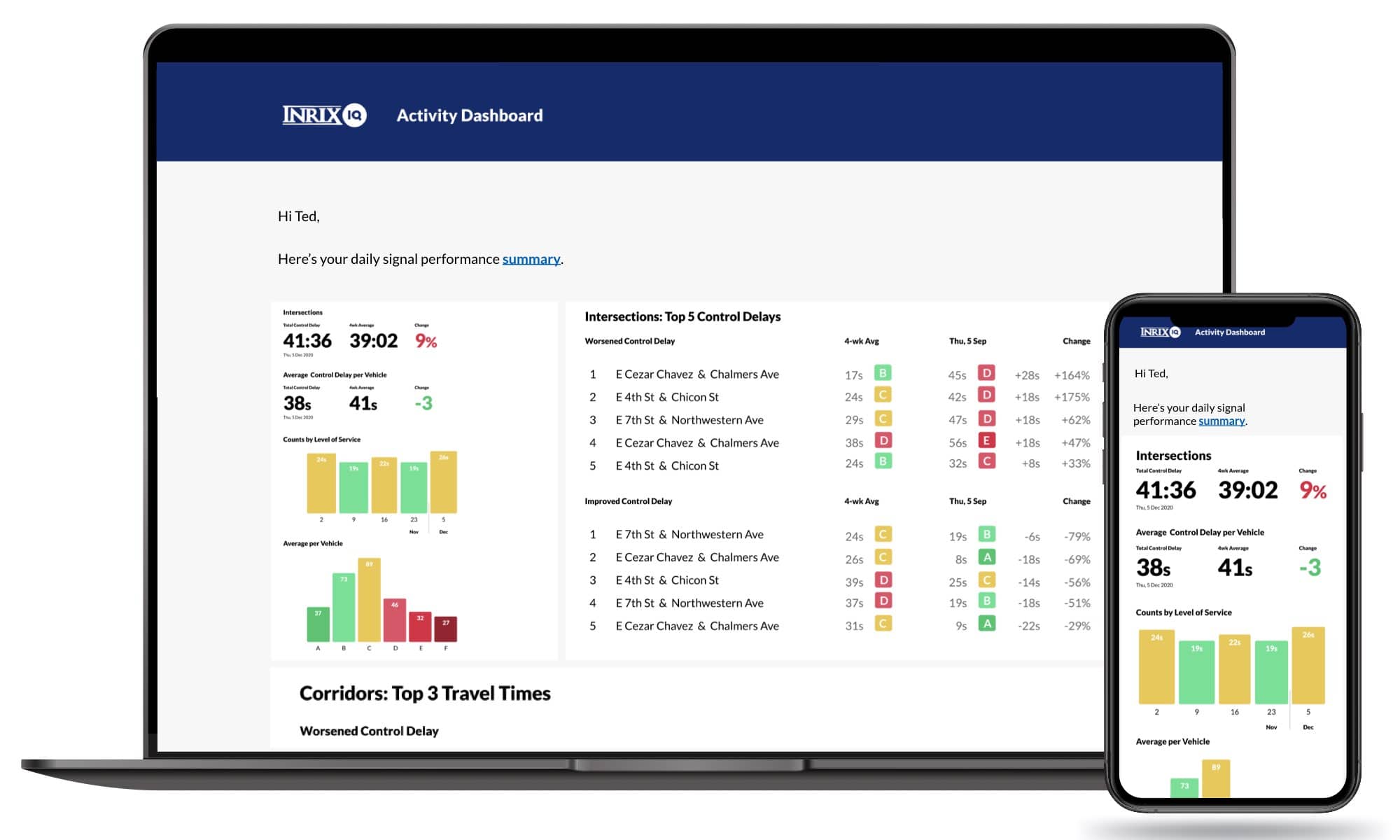
The goal of most transportation professionals usually includes the line, “making roads safer and more efficient for everyone”. Over the last decade, performance driven management techniques relying on unique data sources have opened new avenues to accomplish these transportation objectives. As transportation engineers enter a new era of connected vehicles, smart infrastructure, and big data, new opportunities are arising to revisit the traditional transportation engineering processes and procedures. I’m excited to join the INRIX team using ubiquitous probe data to provide insights, tools, and solutions for transportation agencies around the globe. This blog series will introduce the power of leveraging probe vehicle data to improve traffic signal operations.
Traffic Signal Performance Measures
The preferred method of collecting traffic signal performance data differs from city to city, but most public organizations have at least one thing in common—traffic operations managers have historically relied on manual counts, manual observations, or physical infrastructure to provide data to teams of engineers and technicians to gain insights from the field.
With so much at stake, including worsening traffic congestion, public safety, and air quality, it is easy to see why organizations invest so much time and effort into improving traffic signal performance. While increasing field operations and building more infrastructure to measure traffic are important pursuits, traffic operations managers must always look for new ways to improve and optimize existing practices. The advent of robust vehicle trajectory data creates even more possibility for managers hoping to measure and maintain exceptional signal performance within their cities.
More data than ever
These days it is safe to say that vast amounts of data may hold the key to understanding and improving traffic signal performance. Connected vehicles and mobile devices transmit location data to cloud servers continuously. In terms of traffic, this means the user experience at intersections and corridors are being thoroughly documented by the data. These data can then be used to better inform an agency when things are performing well or when they need to be further investigated.
By and large, public organizations have maintained signal performance through scheduled maintenance, responding to community feedback, or anticipating issues in whatever capacity is available to them at the time. By contrast, data-driven traffic signal software evaluates traffic signal performance by continuously conducting an analysis of vehicles traveling through intersections, which gives end users insights into performance trends or emerging issues. Through the platform, performance metrics such as arrivals on green, control delay, split failure counts, approach speeds, and travel times are provided and updated regularly. These metrics are provided at the intersection, approach, and movement levels, which enable an issue to be pinpointed for potential improvement. This generates a deep understanding of a particular intersection, but also gives operations managers a systematic view of signal performance city-wide without dependence on physical hardware, field observations, community feedback, or lengthy traffic studies.
Responding quickly and efficiently
Response time is critical for any traffic operations team working to maintain optimal traffic performance and has typically represented a significant challenge for many public organizations. Adhering to a regimented retiming schedule ensures that every signal receives attention at some point, but it does little to address a sudden degradation in performance or to avoid spending resources on signals that are already operating at peak performance. How long, for example, does an underperforming signal go before its scheduled retiming? What is the resulting user delay cost and environmental impact of an underperforming signal going months or years without being adjusted? Without a reliable way to rank and prioritize signal projects in order of urgency, organizations hoping to improve response times are left with few options other than to expand headcount or invest in additional hardware.

This is precisely why data matters. Mobility data from connected cars and personal devices feed into the platform constantly, generating accurate reports that are updated daily. Traffic operations managers can use the platform to see which signals would benefit most from adjustment. The ability to prioritize intersections also allows organizations to forego signals that are already performing well, which can help ease budget pressure. Alternatively, the platform also provides operations managers with a tool to immediately understand the impact a change in the system has on its performance. This ensures that the selected solution had the desired impact on the system. Faster response times to underperforming signals result in higher uptime of optimal signal performance, contributing immediately to a reduction of urban congestion and vehicle emissions from unnecessary idling during stops.
Conventional methods of measuring traffic signal performance are effective but require significant investment to collect data. Public organizations have improved their data collection practices by investing in additional infrastructure, but still struggle to create a clear systematic view of traffic performance throughout their cities. The power of modern cloud-based connected vehicle solutions can provide traffic operations managers with immediate, turn-key access to continuous systemwide monitoring and assessment. These intelligent mobility solutions will continue to evolve providing unparalleled value to agencies globally.
This blog post is part of a content series explaining the functionality of INRIX Signal Analytics. To learn more about how INRIX Signal Analytics is helping cities achieve their traffic operations goals sign up for a demo here.




